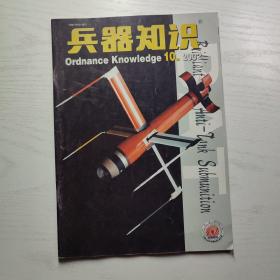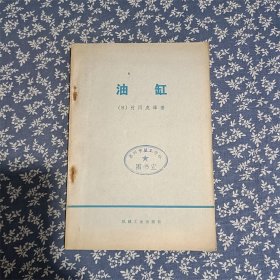
(满包邮)AP化学(第2版)
有划线
¥ 16.8 3.5折 ¥ 48 八五品
仅1件
北京丰台
认证卖家担保交易快速发货售后保障
作者李才
出版社世界图书出版公司
出版时间2018-08
版次1
装帧其他
货号2205
上书时间2024-02-25
- 在售商品 暂无
- 平均发货时间 5小时
- 好评率 暂无
- 最新上架
商品详情
- 品相描述:八五品
- 有划线
图书标准信息
- 作者 李才
- 出版社 世界图书出版公司
- 出版时间 2018-08
- 版次 1
- ISBN 9787519245085
- 定价 48.00元
- 装帧 其他
- 开本 16开
- 纸张 胶版纸
- 页数 250页
- 【内容简介】
-
本书是专门为中国学生量身打造的AP化学辅导用书,符合中国学生的特点,吸取了国内教辅的强项,结合了国外教材的优点,具有以下三个特点:
1.知识点紧贴AP化学考纲,对内容把握精简到位;
2.双语编写,中英文对照,结构清晰,语言可读性强,容易理解;
3.书中每个章节有重要的例题和习题,并插入一些有代表性的考试真题。 - 【作者简介】
- 主编:李才 美国大学理事会AP化学认证教师,英国利兹大学色彩与高分子化学专业硕士。任职于北京王府学校,资深AP、ALEVEL及IGCSE化学教师,教学经验丰富,风格独特,教学成果显著,成绩突出,深受学生喜爱。
- 【目录】
-
Chapter 1 Units and measurements
第一章 单位和测量
1.1 SI units 单位 2
1.2 Measurement and significant figures
测量和有效数字 2
1.2.1 Significant figures 有效数字 3
1.2.2 Significant figures in
calculations 计算当中有效数字位数的保留 4
1.3 Dimensional analysis 量纲分析法 5
Practice 6
Chapter 2 Atomic structure and periodic
table
第二章 原子结构和周期表
2.1 Atomic structure 原子结构 10
2.1.1 The atomic structure 原子结构10
2.1.2 Discovery of atom 原子的发现 11
2.2 Atomic weight and isotopes 原子量和同位素 13
2.2.1 Relative atomic mass 相对原子质量 13
2.2.2 Isotopes 同位素 14
2.3 The periodic table of elements 元素周期表 15
2.4 Waves and spectroscopy 波和光谱学 17
2.4.1 Waves 波 17
2.4.2 Spectroscopy 光谱 19
2.4.3 Quantum theory 量子理论 21
2.5 Electron configuration 电子排布 22
2.5.1 Atomic orbitals 原子轨道 22
2.5.2 Four quantum numbers 四个量子数 22
2.5.3 Rules of electron configuration 电子排布规则 24
2.5.4 Electron configuration and
orbital diagram 电子排布和轨道图 25
2.6 Periodic properties of the elements
元素周期律 30
2.6.1 Atomic size 原子大小 30
2.6.2 Ionization energy (IE) 电离能 32
2.6.3 Other aspects 其他周期律 33
重要词汇33
Practice 34
Chapter 3 Stoichiometry and chemical
reactions
第三章 化学计量和化学反应
3.1 Types of chemical reactions 化学反应的种类 38
3.2 Writing chemical equations 书写化学方程式 39
3.2.1 Chemical equation and chemical
formula 化学方程式和化学式 39
3.2.2 Writing the chemical equation 书写化学方程式 40
3.2.3 Balancing chemical equations 配平化学反应方程式 43
3.3 Energy change in a reaction 反应中的能量变化 45
3.4 Stoichiometry in reactions 反应中的化学计量 47
3.4.1 Mole 摩尔 47
3.4.2 Percent composition of compounds 化合物的百分含量 50
3.4.3 Determining the formula of a
compound 确定化合物的化学式 51
3.4.4 Limiting reactant (reagent) 限量反应物 52
3.4.5 Percent yield 百分产率 54
重要词汇55
Practice 55
Chapter 4 Chemical bonding and
molecular geometry
第四章 化学键和分子构型
4.1 Chemical bonding theory 化学键理论 62
4.2 Ionic bonding 离子键 62
4.3 Covalent bonding 共价键 64
4.3.1 Bond polarity and
electronegativity 键极性和电负性 64
4.3.2 Other properties of covalent bond
共价键的一些其他性质 66
4.4 Metallic bonding 金属键 67
4.5 Drawing Lewis dot structure 路易斯结构 67
4.5.1 Resonance structure 共振结构 69
4.5.2 Formal charge 形式电荷 70
4.5.3 Incomplete octets and expanded
octets 不符合八电子理论 71
4.5.4 Bond enthalpy (energy) 键能 72
4.6 Molecular geometry 分子构型 72
4.6.1 Nonbonding pairs and multiple
bonds affecting bond angle未成键电子和多键对键角的影响 77
4.6.2 Polarity of molecules 分子极性 78
4.6.3 Orbital overlap and valence-bond
theory 轨道重叠和价键理论 79
4.6.4 Hybrid orbitals 杂化轨道 79
4.6.5 Sigma (σ) and pi (π) bonds σ 键和π 键 80
重要词汇 81
Practice 82
Chapter 5 Intermolecular forces and
phases
第五章 分子间作用力和相变
5.1 Intermolecular forces 分子间作用力 88
5.1.1 Dipole-dipole force 取向力 88
5.1.2 London dispersion force 伦敦色散力 89
5.1.3 Hydrogen bonding 氢键 90
5.1.4 Ion-dipole force 离子—偶极力 91
5.1.5 Properties reflected by
intermolecular forces分子间作用力与物质的性质 91
5.2 Gases 气态 93
5.2.1 The ideal gas laws 理想气体定律 94
5.2.2 The kinetic molecular theory 分子动力学 94
5.2.3 Effusion and diffusion 流出和扩散 96
5.2.4 Real gas behavior 真实气体 97
5.3 Solids 固态 97
5.3.1 Metallic solids 金属固体 98
5.3.2 Ionic solids 离子固体 99
5.3.3 Molecular solids 分子固体 100
5.3.4 Covalent network solids 共价网状固体 100
5.4 Solutions 溶液 101
重要词汇 102
Practice 103
Chapter 6 Kinetics
第六章 动力学
6.1 Reaction rate 反应速率 108
6.2 Rate law 速率定律 109
6.3 Integrated rate law (concentration
vs time) 积分速率方程 111
6.3.1 First order reaction 一级反应 111
6.3.2 Second order reaction 二级反应 111
6.3.3 Zero order reaction 零级反应 112
6.3.4 Half-life 半衰期 113
6.4 Collision theory 碰撞理论 114
6.5 Factors affecting reaction rate 影响反应速率的因素 115
6.6 Reaction mechanisms 反应机理 116
重要词汇 118
Practice 119
Chapter 7 Chemical equilibrium
第七章 化学平衡
7.1 The equilibrium constant 平衡常数 131
7.1.1 Expression of equilibrium
constant Keq 平衡常数Keq 的表达 131
7.1.2 Other equilibrium constants 其他平衡常数 132
7.1.3 Equilibrium law for multi-step
reaction 多步反应的平衡规律 135
7.1.4 The reaction quotient Q 反应商数Q 135
7.2 Le Châtelier’s principle 勒夏特列原理 137
7.2.1 Factors affecting the equilibrium
影响平衡的因素 137
7.3 Acids and bases definitions 酸和碱的定义 139
7.4 The pH scale 酸碱pH 标度
141
7.5 Strong and weak acids and bases 强酸强碱和弱酸弱碱 143
7.5.1 Strong acids and bases 强酸和强碱 143
7.5.2 Weak acids and bases 弱酸和弱碱 144
7.5.3 Acid-base behavior of salt
solutions 盐溶液的酸碱性 144
7.5.4 Factors that affect acid strength
影响酸性强弱的因素 146
7.6 Buffers 缓冲溶液 147
7.6.1 The common ion effect 同离子效应 147
7.6.2 Buffered solutions 缓冲溶液 148
7.6.3 The pH of a buffer 缓冲液的pH 149
7.7 Acid-base titration 酸碱滴定 151
7.7.1 Strong acid-strong base titration
强酸 — 强碱滴定 152
7.7.2 Weak acid-strong base titration 弱酸 — 强碱滴定 153
7.7.3 Indicator 指示剂 155
7.8 Solubility equilibria 溶解平衡 157
重要词汇 158
Practice 158
Chapter 8 Thermodynamics
第八章 热力学
8.1 Energy (E ) and enthalpy (H ) 能量和焓 170
8.1.1 Energy 能量 170
8.1.2 State function 状态函数 171
8.1.3 Enthalpy 焓 171
8.2 Calculating enthalpy changes in
reactions 焓变的计算方法 172
8.2.1 Stoichiometry 化学计量法 172
8.2.2 Hess’s law 盖斯定律
173
8.2.3 UsingΔH0f 用标准摩尔生成焓 174
8.3 Calorimetry 量热法 176
8.4 Entropy (S ) 熵 177
8.4.1 Entropy change of universe(ΔS universe) 系统的熵变 178
8.4.2 Entropy change of system(ΔS system) 体系的熵变 178
8.4.3 Entropy change of surroundings(ΔS surroundings) 环境的熵变 178
8.4.4 The first law of thermodynamics 热力学第一定律 179
8.4.5 The second law of thermodynamics 热力学第二定律 179
8.4.6 The third law of thermodynamics 热力学第三定律 179
8.5 Gibbs free energy (G ) 吉布斯自由能 180
8.6 Enthalpy, entropy and Gibbs free
energy 焓、熵和吉布斯自由能 181
8.7 Gibbs free energy and equilibrium 吉布斯自由能和化学平衡 182
重要词汇 183
Practice 183
Chapter 9 Electrochemistry
第九章 电化学
9.1 Voltaic cell 原电池 192
9.1.1 Electrode 电极 193
9.1.2 Electron flow 电子流向 193
9.1.3 Half equation 半反应 194
9.1.4 Salt bridge 盐桥 194
9.2 Electrolysis and electrolytic cell 电解和电解池 195
9.2.1 Electrode 电极 196
9.2.2 Stoichiometry of electrolysis 电解的计算 197
9.3 Cell potential (E ) 电池电势 197
9.3.1 Standard reduction potentials 标准还原电势 198
9.3.2 Standard hydrogen electrode (SHE)
标准氢电极 198
9.3.3 Comparing E °red values 标准还原电势的比较 199
9.4 Cell potential, free energy, and
equilibrium 电池电位、自由能和平衡常数的关系 201
9.4.1 Nernst equation 能斯特方程 203
重要词汇 204
Practice 204
Chapter 10 Organic chemistry
第十章 有机化学
10.1 Hydrocarbons 碳氢化物 212
10.1.1 Alkane 烷烃 212
10.1.2 Alkene 烯烃 212
10.1.3 Alkyne 炔烃 213
10.1.4 Nomenclature of hydrocarbons 碳氢化物的命名 213
10.1.5 Cyclic aliphatic hydrocarbons 环状脂肪烃 215
10.1.6 Aromatic hydrocarbons 芳香烃 215
10.1.7 General properties of
hydrocarbon 碳氢化物的基本性质 216
10.2 Functional groups 官能团 217
10.3 Isomerism 同分异构现象 218
10.4 Fundamental organic reactions 基本的有机反应类型 219
10.4.1 Combustion reaction 燃烧反应 219
10.4.2 Substitution reaction 取代反应 219
10.4.3 Addition reaction 加成反应 219
10.4.4 Condensation reaction 缩合反应 220
重要词汇 220
Practice 221
Chapter 11 Experiment
第十一章 实 验
11.1 Rules for basic laboratory safety 实验室安全守则 226
11.2 Laboratory apparatus 实验仪器 226
11.3 Some important experiments in AP
chemistry AP化学中的一些重要实验 230
11.3.1 Gravimetric analysis 重量分析 230
11.3.2 Heat of reaction 反应热 230
11.3.3 Titration 滴定 231
11.3.4 Paper chromatography 色谱层析 231
11.3.5 Beer’s law 比尔定律
232
Appendix 1 Periodic table of element in
AP chem. exam 234
Appendix 2 AP chem. equations and
constants 235
点击展开
点击收起
相关推荐
— 没有更多了 —































以下为对购买帮助不大的评价